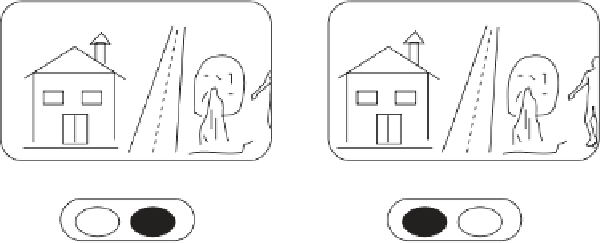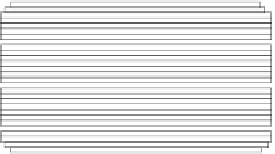Graphics Programs Reference
In-Depth Information
Left-eye image
Right-eye image
Time
Figure 3.52: Page-Flip Monitor and Shutter Glasses.
This method generates high-quality, high-resolution color stereoscopic images but
requires special hardware, so it is not as common as the previous methods.
Line-Alternate Techniques
In the past, most monitors used with computers were cathode-ray tubes (CRTs). Re-
cently, liquid crystal display (LCD) monitors have become popular. Both types of moni-
tors operate as
raster scan
displays and generate an image in the
interleaved
mode. The
term “raster scan” means that the image is displayed on the monitor screen row by row,
from top to bottom, and each row of pixels is generated from left to right. A complete
scan of the screen is known as a refresh. In a CRT, this is achieved by sweeping the
electron beam over the screen row by row from the top left corner to the bottom right
corner. In an LCD monitor, the individual LCDs are scanned in this order and turned
on or off as needed. The term “interleaved” means that each refresh of the screen is
done in two parts. The first part refreshes the display of the odd-numbered screen rows,
and the second part refreshes the even-numbered rows.
Figure 3.53: Line-Alternate Techniques.
A line-alternate technique for stereoscopic images displays the right-eye image on
the odd-numbered rows and the left-eye image on the even-numbered rows or vice versa
(Figure 3.53). Special shutter glasses block the left eye from seeing the display during
the first part of the refresh (i.e., when the odd-numbered rows are scanned and refreshed)
and blocks the right eye during the second part. Such techniques are popular in small,
head-mounted displays.
A three-dimensional image created by the various line-alternate techniques is stable
and doesn't suffer from flickers because the screen is normally scanned at a flicker-free






Search WWH ::

Custom Search